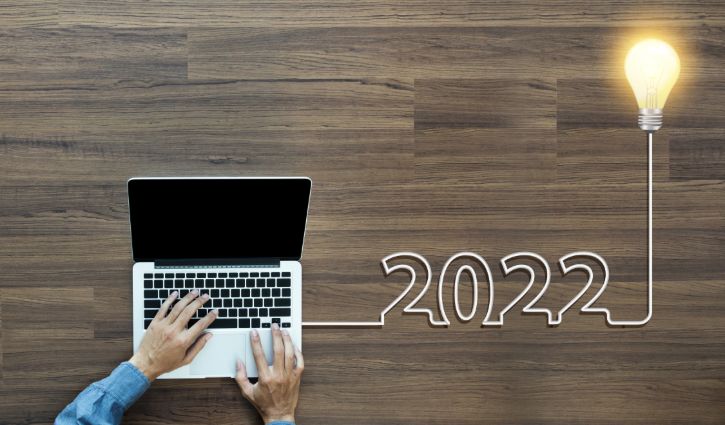
5 HR Technology Trends to Monitor in 2022
No matter a company’s size, its day-to-day needs can feel overwhelming for human resources (HR) leaders, especially when faced with new coronavirus-related responsibilities or evolving role duties. Amid the COVID-19 pandemic, many employers are leveraging tech to address today’s challenges.
Fortunately, technology can assist HR professionals in addressing today’s challenges by enhancing the employee experience, improving workflows and helping organizations respond to change. The rapid development of HR technology can seem intimidating at first; however, much of what employers use today is intuitive and user-friendly.
This article explores five technology trends for employers to watch for in 2022.
1. Virtual Recruitment
According to LinkedIn, 81% of talent professionals say virtual recruiting will continue even after the pandemic. Notably, 70% of those respondents say virtual recruiting will become the new standard. As recruiting during the pandemic continues to be a top challenge for many organizations, consider the following ways employers are utilizing technology to engage the job market:
- Using online platforms—such as LinkedIn, Indeed, Handshake and more—to make it easy for applicants to apply directly
- Maintaining an active presence on those accounts by providing insights and thought leadership
- Aligning an employer brand with recruiting efforts by expanding an online presence
- Participating in virtual events—such as career fairs—to engage with job seekers and be represented without physically attending events
- Leveraging artificial intelligence (AI) to filter resumes and identify top candidates
Virtual recruiting is here to stay. So, in 2022, employers can consider how some of these strategies improve or streamline their recruiting processes to ultimately win more candidates in a tight labor market.
2. Onboarding and Offboarding Technology
After recruitment, technology can streamline the process of onboarding new hires. Some employers use applicant tracking system (ATS) technology that improves accuracy and speeds up the process of collecting employee information. New hires can complete and sign onboarding paperwork electronically, and then stakeholders can be notified automatically to stay informed.
Likewise, technology can also simplify the offboarding process. Human capital management (HCM) software can ensure records are well kept and accurate to give HR leaders peace of mind. Technology can provide consistency to both of these critical processes that impact the overall employee experience.
3. HR Process Automation
A growing number of employers are implementing automation into their HR processes. HR professionals often spend much of their everyday time and energy on the following tasks:
- Handling employee information
- Managing payroll, including timesheets and paid time off requests
- Staying up to date on compliance
HR automation can improve many of these daily and frequent processes to create efficiencies. For example, payroll automation can deliver employee pay with fewer manual processes by collecting, organizing and storing employee time and attendance and handling calculations.
4. Benefits Administration Technology
Variations of virtual open enrollment are among the many ways to make employee benefits adaptable for employees in different work environments. As the future of benefits administration trends toward digitization, here are some ways employers are leveraging technology:
- Providing a destination for voluntary benefits—Digital platforms can help employees leverage more of their voluntary benefits. Online access to voluntary benefits, such as financial wellness coaching, budgeting tools and mental health support, may increase employee utilization of benefits that employees have come to depend on during the pandemic.
- Using robotic process automation (RPA) to streamline processes—Chatbots and other AI elements can remotely guide employees through benefits enrollment, medical plans, retirement savings and financial wellness. RPA technology ranges from easily accessible online tools to custom applications. Going a step beyond RPA, robotic process as a service (RPaaS) combines automation and cloud-based platforms so users can access applications on shared computing systems.
- Leveraging data for cost-saving potential—Benefits administrators and employers can use data and analytics to learn more about benefits in their workplace and inform their benefits strategies.
Digital tools and thoughtful user experiences will matter now more than ever. As feasible, employers can seize the opportunity in 2022 and consider how technology can improve their benefits enrollment experience.
5. Learning and Development Technology
The pandemic forced a shift from in-person learning to e-learning and online coaching. A learning management system (LMS) is a relatively affordable and attainable option—and most employers can use the software to improve efficiencies and help effectively facilitate learning and development efforts from a distance. LMSs can increase accessibility and ensure all employees have equal onboarding and learning opportunities. Schedule availability or location won’t hold back employees from professional growth.
As organizational needs accelerate and evolve, it’s essential that employees also have the necessary skills to succeed and grow. Employers can use their learning and development strategy to address talent shortages and skills gaps. Especially in today’s job market, employers can remain competitive by prioritizing employee learning and development efforts.
Summary
More HR departments and professionals are leveraging technology to streamline common or time-consuming processes. In addition to time savings, some organizations may experience HR cost savings and successful business results when they embrace technology for the workplace.
Consider how these trends may motivate your organization and employees to adopt new technology that is intuitive and accessible.
